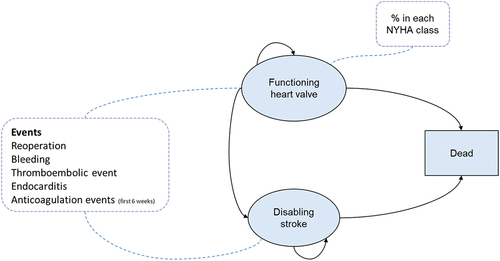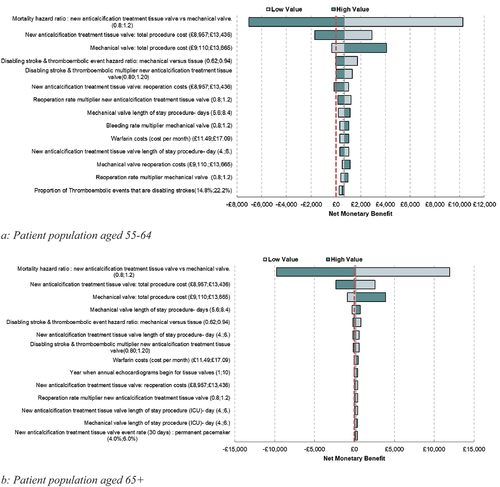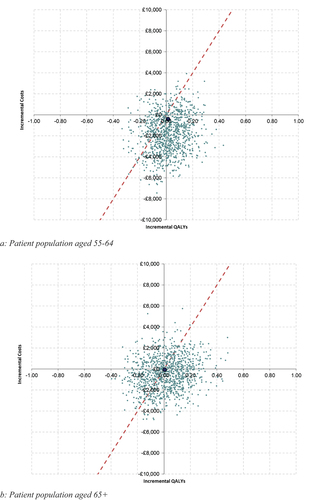Figures & data
Figure 1. Model structure.

Table 1. Costs used in the model.
Table 2. Utilities used in the model.
Table 3. A summary of the base case results.
Figure 2. Deterministic sensitivity analysis.

Table 4. Cost breakdown per patient.
Table 5. Scenario analysis- improvement in reoperation rate for novel tissue valve from the base case.

